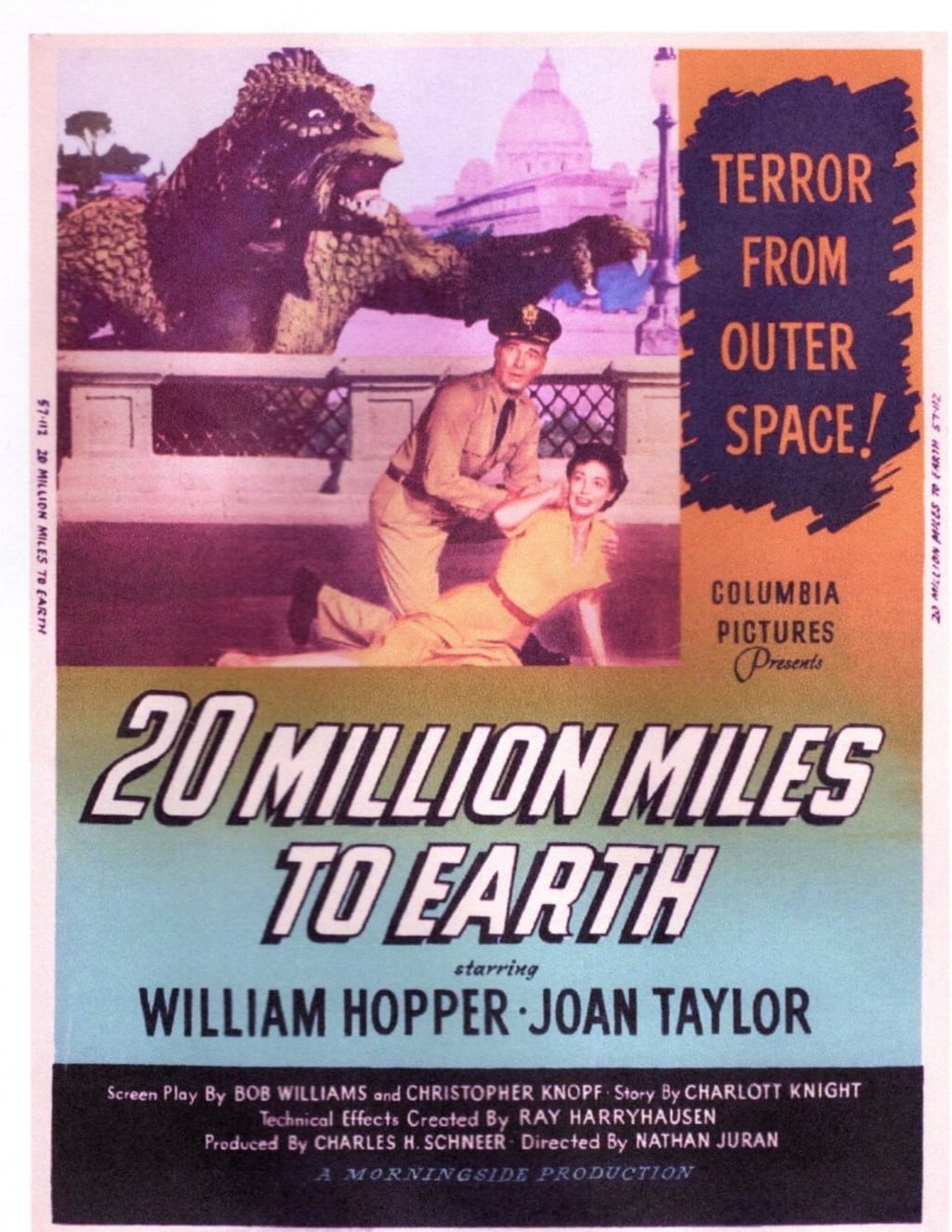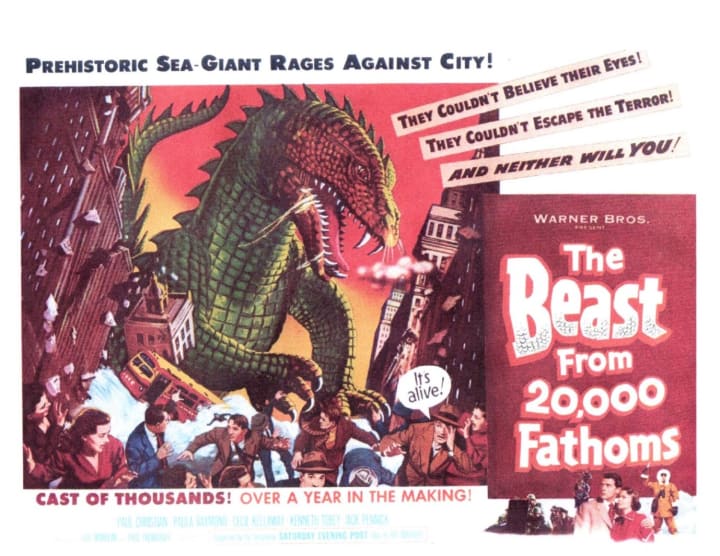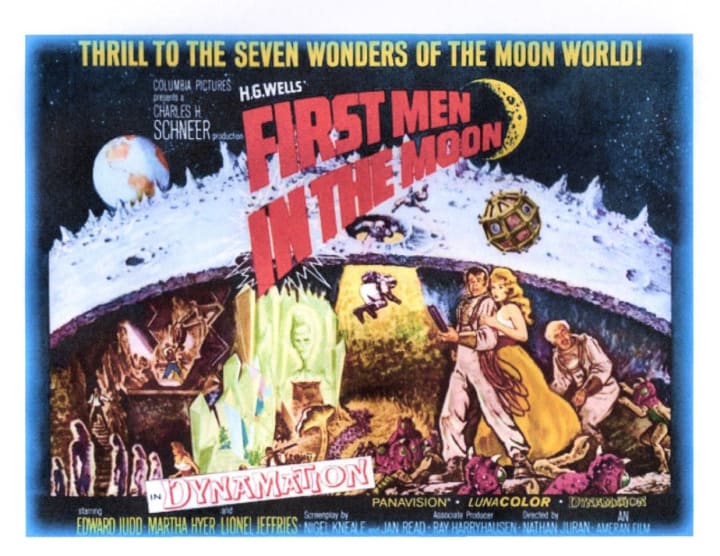What the Heck is Stop Motion Animation?
If you like watching monster movies, then you know the work of Ray Harryhausen.

I’m not the expert here. My husband is. But as any of you know when you have a spouse or roommate or parent who is a huuuuuuge fan of something or someone, it rubs off. Call it osmosis or assimilation, we can’t help but learn the most intricate details of a world that might not be of our own choosing.
And that’s why I’m writing about Ray Harryhausen.
In the movie world, Ray Harryhausen is the undisputed king of ‘stop motion animation’ and single-handedly created the creatures for a number of classic movies in the 1950s and 1960s including “Clash of the Titans”, “The 7th Voyage of Sinbad”, “One Million Years B.C.” and “Jason and the Argonauts”. He is a legend in the world of film visual effects as an animator, producer and visual effects designer, and received a Lifetime Achievement Academy Award in 1992.
Now, a bit about stop motion animation. If you’ve ever seen Gumby or “The Nightmare Before Christmas”, you‘ve seen stop motion animation: it’s where a model (whether it’s Gumby or a skeleton or a dinosaur) is photographed with one frame of film, then something on the model is moved a fraction of an inch and one more frame is shot … over and over again, one frame at a time. When the finished film is projected at 24 frames per second, it gives the illusion of movement. It is incredibly labor intensive and time consuming but it was the best technology available to animate creatures in the pre-computer years. And Ray Harryhausen designed and executed all of his work by himself.

My introduction to Ray’s work came on one of the first dates with my then-boyfriend, who invited me to his apartment for dinner and a movie. I don’t remember the dinner, but I do remember the movie he was excited to share with me: his favorite film, “The Beast from 20,000 Fathoms”. I’ll admit that monster movies were not my genre of choice, but I was enough of a good sport to sit through the movie politely, and frankly the best part was seeing a grown man express the glee of an 11-year old boy as he was watching the dinosaur called “Rhedosaurus” arise from the ocean to demolish a lighthouse, probably for the hundredth time.
Since then, my now-husband has shown me all of Ray’s movies, over and over again. We also had the pleasure of meeting Ray several times at screenings and book signings over the years, and we were there on Hollywood Boulevard cheering as we watched him get his star on the Hollywood Walk of Fame.

And the creatures … and yes, they are “creatures” not “monsters”. There have been many polls over the years, voting for the greatest Ray Harryhausen creatures, and the “top ten” is fairly predictable. But before I list his Greatest Hits, I’ll throw in a few honorable mentions: my personal favorite of his films, arguably the film with the best script and cast is “First Men in the Moon”, based on the novel by H.G. Wells. For those of you who love dinosaurs, check out “One Million Years B.C.” with Raquel Welch. There’s a giant octopus terrorizing San Francisco in “It Came from Beneath the Sea”, and of course, who can forget the flying saucers demolishing Washington DC in “Earth vs. the Flying Saucers.”
According to a poll by the Ray & Diana Harryhausen Foundation, the top ten Ray Harryhausen creatures are:
10. The Rhedosaurus from “The Beast from 20,000 Fathoms”; watch for Lee Van Cleef in a cameo as a sharpshooter in the final sequence.
9. Gwangi from “The Valley of Gwangi”, featuring cowboy & dinosaurs.
8. The Skeleton from “The 7th Voyage of Sinbad”, an incredible swordfight between the animated skeleton and our hero Sinbad.
7. Bubo the Owl from “Clash of the Titans”. Even if you’ve never seen this movie, you’ll recognize the quote from Zeus: “Release the Kraken!”
6. The Ymir from “20 Million Miles to Earth” – the scene where the baby Ymir is startled by a bright light shows such emotion that you forget it’s a model.
5. The Cyclops from “The 7th Voyage of Sinbad” – the moment the cyclops exited the cave is a moment that began the careers of many young movie-goers who became special effects designers.
4. Kali from “The Golden Voyage of Sinbad,” an animated creature who dances with six arms (and later fights with six swords).
3. Medusa from “Clash of the Titans” with snakes for her hair.
2. The giant statue of Talos from “Jason and the Argonauts” – the moment when the statue first turns his head and you realize he’s alive is among the most thrilling moments in any motion picture. I kid you not.
1. The Children of the Hydra’s Teeth (aka the Skeleton Army) from “Jason and the Argonauts” – universally accepted as the most exciting example of Ray Harryhausen’s work: there are seven skeletons, each animated separately, in a battle with Jason and his men. As with all stop motion animation, each movement is animated one frame at a time, so you can imagine how complicated the process was for this scene.
His fans are legendary – filmmakers including George Lucas, James Cameron, Steven Spielberg and Peter Jackson have often said Ray Harryhausen’s work was part of the spark that interested them in filmmaking. The sheer number of in-jokes saluting him is impressive: in “Monsters Inc.”, there is a restaurant called “Harryhausen’s”; the label on the piano played in “The Corpse Bride” is “Harryhausen”. Famously, George Lucas has been quoted as saying “Without Ray Harryhausen, there would likely have been no Star Wars”.
And no discussion of Ray Harryhausen would be complete without mentioning his friend, Ray Bradbury. Ray and Ray met at a science fiction club when they were 18 years old and immediately bonded over their love of “King Kong”. Ray Bradbury says they made a vow to “grow old, but never grow up,” and they did stay lifelong friends.
There is a delightful documentary about Ray Harryhausen, “The Harryhausen Chronicles” (notice the pun alluding to his friend Ray Bradbury’s “The Martian Chronicles”), highlighting his career and showing clips of most of his creatures including some of his early work. If I’ve intrigued you at all, I encourage you to watch it.
Sadly, Ray died in 2013, but stop motion animation is not a dying art – the “Shaun the Sheep” series is stop motion, as are the “Wallace and Gromit” movies; also Tim Burton’s films “The Corpse Bride” and “The Nightmare Before Christmas”. Computers may have reinvented what you can see on a movie screen today, but some people feel that CGI lacks the charm of the physical creatures used in stop motion animation.
I encourage you to remember the name Ray Harryhausen – his work in the movies is legendary and will never be matched.
Thanks for reading my love letter to Ray Harryhausen. If you are a movie fan, click 'LIKE' so I'll know I'm not alone!
About the Creator
Judy Race
My background runs the gamut from TV production to working at H&R Block doing income taxes.
See my website https://judyrace.weebly.com for daily haiku, as well as the occasional limerick.
I hope you enjoy what I have to offer!
Enjoyed the story? Support the Creator.
Subscribe for free to receive all their stories in your feed. You could also pledge your support or give them a one-off tip, letting them know you appreciate their work.






Comments
There are no comments for this story
Be the first to respond and start the conversation.